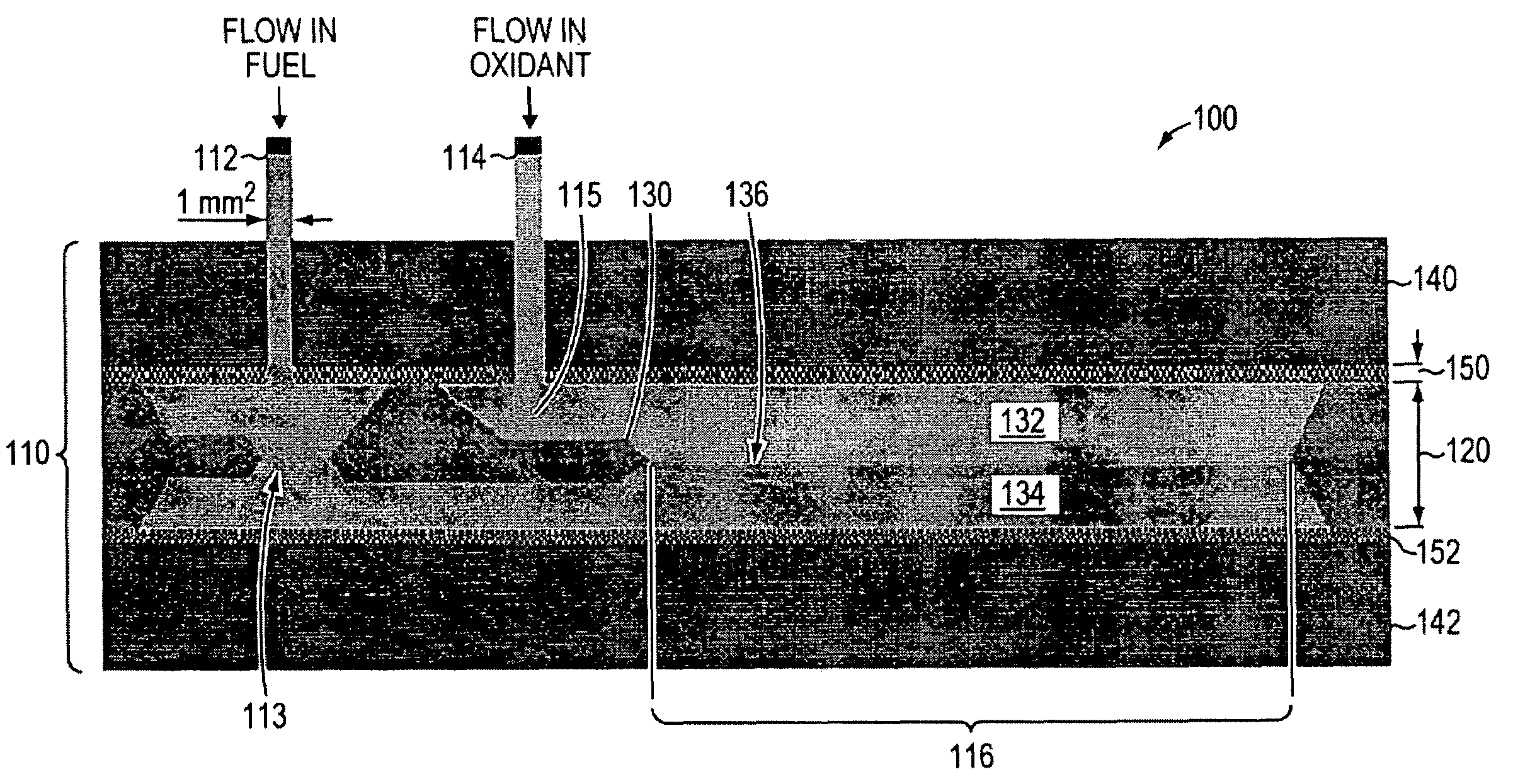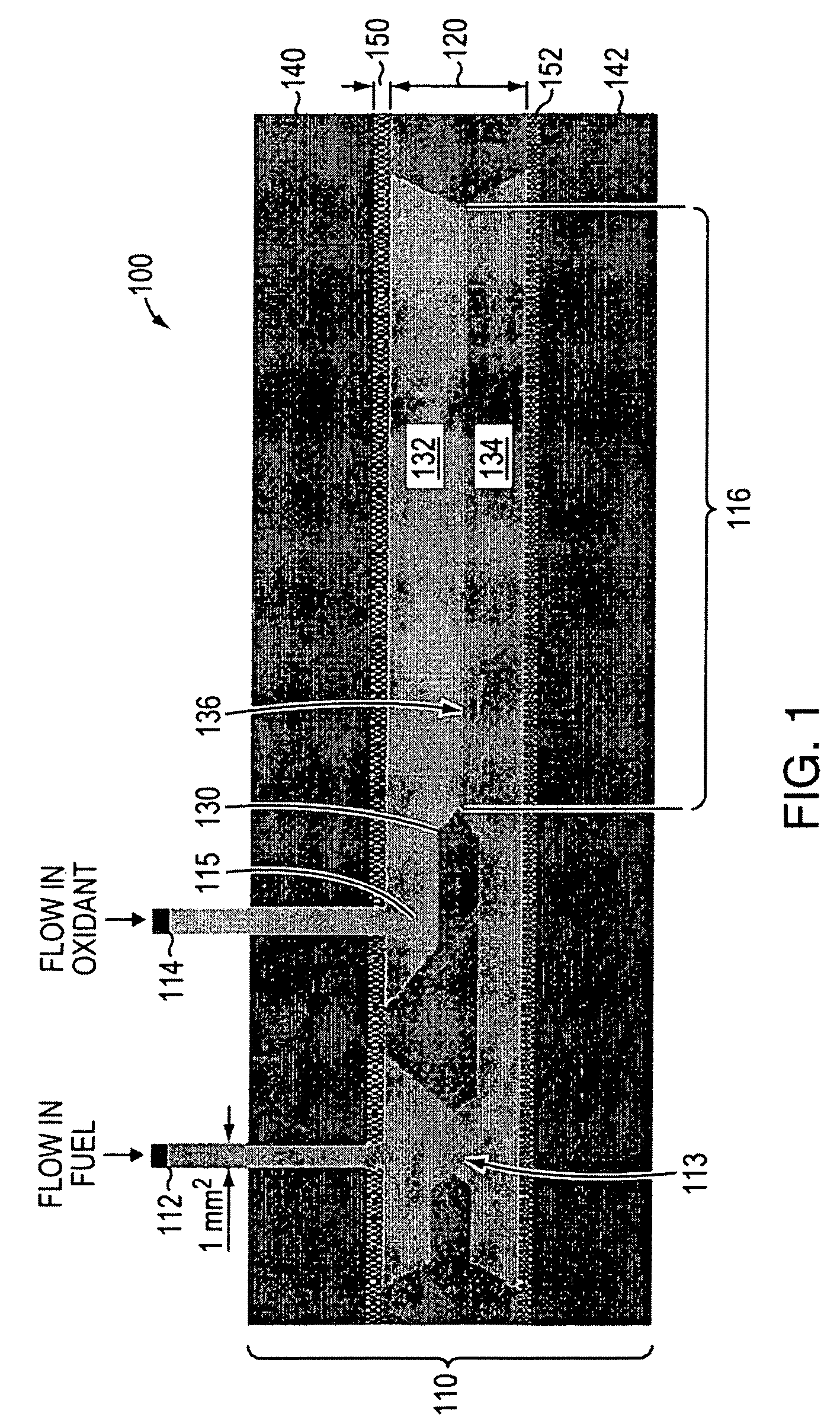Planar membraneless microchannel fuel cell
a microchannel fuel cell, membraneless technology, applied in the direction of fuel cell details, aqueous electrolyte fuel cells, electrochemical generators, etc., can solve the problems of high cost associated with rechargeable batteries, and inability to meet the goals of rechargeable batteries alon
- Summary
- Abstract
- Description
- Claims
- Application Information
AI Technical Summary
Benefits of technology
Problems solved by technology
Method used
Image
Examples
Embodiment Construction
[0038]The invention described herein relates to a planar membraneless microchannel structure. In one embodiment, the structure is useful in constructing a planar membraneless microchannel fuel cell (PM2FC) and for generating electrical power by consuming fuel components (e.g., a substance capable of being oxidized and a substance capable of being an oxidizer) within the structure so that the fuel components are reacted and electrical power is produced that can be extracted from terminals of the fuel cell embodying the planar membraneless microchannel structure. However, the features of the planar membraneless microchannel structure described hereinbelow are also useful in other applications. Examples of other applications include certain kinds of diffusion controlled chemical reactions and applications of those reactions, such as in diagnostic tests; and controlled processing of materials, based on controlled fluid dynamics.
[0039]The flow regime described by The '206 patent provides...
PUM
| Property | Measurement | Unit |
|---|---|---|
| weight | aaaaa | aaaaa |
| depth×1 | aaaaa | aaaaa |
| depth×1 | aaaaa | aaaaa |
Abstract
Description
Claims
Application Information
 Login to View More
Login to View More - R&D
- Intellectual Property
- Life Sciences
- Materials
- Tech Scout
- Unparalleled Data Quality
- Higher Quality Content
- 60% Fewer Hallucinations
Browse by: Latest US Patents, China's latest patents, Technical Efficacy Thesaurus, Application Domain, Technology Topic, Popular Technical Reports.
© 2025 PatSnap. All rights reserved.Legal|Privacy policy|Modern Slavery Act Transparency Statement|Sitemap|About US| Contact US: help@patsnap.com



